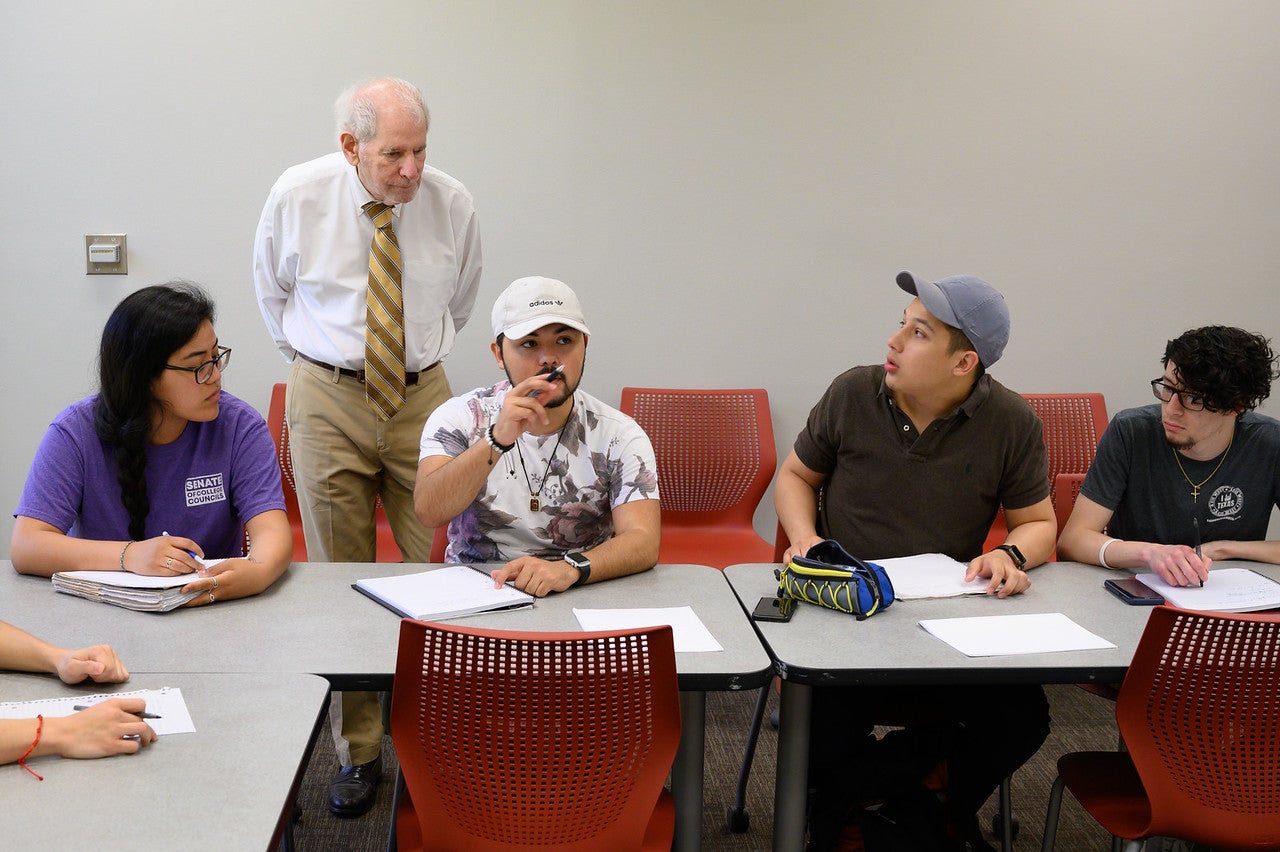
Co-Requisites Are Better for Students Than Standalone Dev Ed Courses
Co-requisites work. So says the research, and so says Uri Treisman after his first-hand experience teaching freshman calculus. Treisman is the Dana Center’s executive director and a University Distinguished Teaching Professor at The University of Texas at Austin.
The co-requisite course model is an increasingly popular alternative to the familiar “remedial” approach to developmental education in entry-level college mathematics. With most traditional remediation models, students are asked to take one or more non-credit bearing courses before taking the college-level course they need. In contrast, co-requisite models enable students to enter directly into college-level courses while also accessing additional academic and related supports through a “co-requisite,” such as a concurrent course, lab, or tutoring program.
The co-requisite approach is gaining momentum in higher education.
And rightly so. Nationwide, more and more students are taking and succeeding in credit-bearing college-level courses where they might have required to take traditional remediation courses in the past.
While students pay good money for remedial courses, they earn no college credit regardless of how well they do. Even more troubling, the evidence confirms that traditional remedial courses too often contribute to the high failure and dropout rates across K–16 mathematics education that Treisman calls “a burial ground for our students’ aspirations.”
It turns out the success of the co-requisite movement is a big deal.
As the Dana Center’s own Connie Richardson and Jen Dorsey have written in the Dana Center Mathematics Pathways monograph Emerging Issues in Mathematics Pathways: Case Studies, Scans of the Field, and Recommendations, co-requisites take many forms, including “boot camps, extended hours each week with embedded support content, separate but linked support courses that run throughout the semesters, mandatory tutoring, compressed courses, stretch courses, and other structures."
And for best results, each institution or system’s co-requisites are designed and implemented with the local contexts and needs of students, courses, and faculty in mind.
Co-requisites are not as widespread in the calculus pathway, where the standard prerequisites to enter into a calculus course often prevail. Yet, in the Fall 2019 semester, Treisman taught a calculus course with a co-requisite study session for his freshman students.

That calculus class met every Tuesday and Thursday, and students got together every Wednesday evening for their co-req study session. Treisman and his teaching assistants offered students just-in-time supports—along with a sense of belonging and scholarly community.
Turns out, the success of this approach is a revelation for faculty, including Treisman. As he shared during the opening plenary session for the Conference Board of the Mathematical Sciences (CBMS) Forum:
Faculty, including me, still can’t believe it. How can these students [succeed in my class] without knowing every single topic they need to know before they come in? Turns out if they are in courses relevant to their interest and they have support, a lot of them will do it.
He later added:
The thing that’s surprising everybody is that many of these students, once they succeed, get really angry. They say I should have done or could have done the other stuff. And they go back and take those courses and do well in them.
The effects of co-requisites go well beyond the semester that students experience them—co-requisites enable students to go on to complete other courses and, ultimately, their degrees.
The movement toward co-requisites is so compelling that state legislators and boards of regents are weighing in.
For example, in Texas, House Bill 2223 requires that a progressively increasing percentage of college students who would ordinarily take a developmental course must instead be enrolled in a college-level course with co-requisite support. The bill applies to multiple subject areas, including mathematics, reading, and writing. Texas is not alone in supporting co-requisites with policy. And in California, Assembly Bill 705, “…restricts colleges from requiring students to enroll in non-transferable English and math courses that lengthen their time to degree…” completion and encourages colleges to adopt co-requisite models.
Nationwide, institutions are implementing co-requisites in ways that make it more feasible for students to complete college-level courses in a timely manner. As Treisman continued in his talk at the CBMS Forum:
It’s still hard to believe that [co-requisites] work. As a professor, I still doubt it, but the data is overwhelming. Most students will do better if you put them in a college course and figure out how to support them just in time. The evidence is overwhelming.
Indeed.
Additional resources
You can hear (and see) Treisman’s full presentation on YouTube, here: CBMS Forum Opening, July 8, 2019, “High School to College Mathematics Pathways: Preparing Students for the Future. Opening Plenary & Welcome.” It’s about an hour.
You also might want to check out the summer 2018 opinion piece on co-requisites by Alexandra Logue, a research professor at the Center for Advanced Study in Education at the City University of New York Graduate Center.
The Dana Center Mathematics Pathways offers a variety of co-requisite support materials, along with professional learning opportunities for teams desiring to implement co-requisites at their institutions.
About the Author
Monette McIver
I grew up in Bowie, Maryland and never questioned whether or not I would go to college—only where. After college, I redirected my career toward the language arts and education leadership. I now play with words the way I used to play with numbers and formulas. It’s a magical experience that I’ve shared with the many elementary students I taught and the new teachers I supervised, many who didn’t think they were writers or that they could teach young students to write.
Get in Touch
How can the Dana Center work with you to ensure that our nation's students are ready for postsecondary education and the contemporary workforce?

